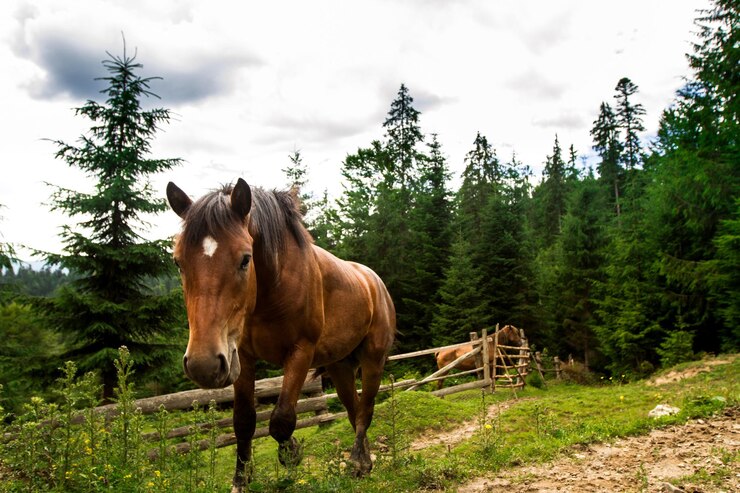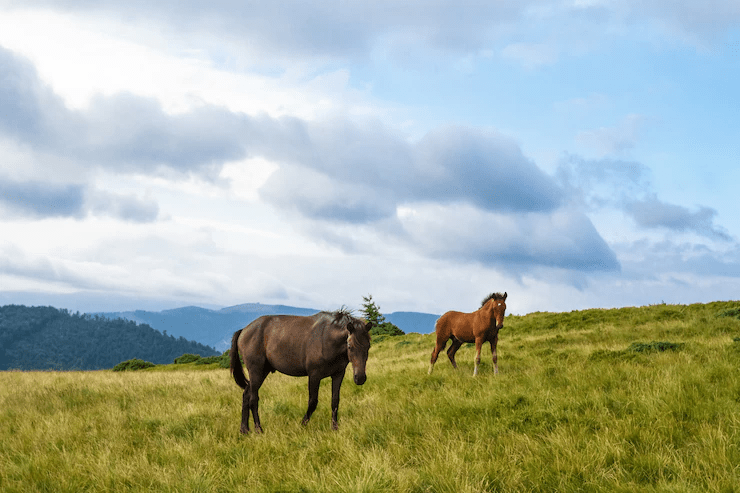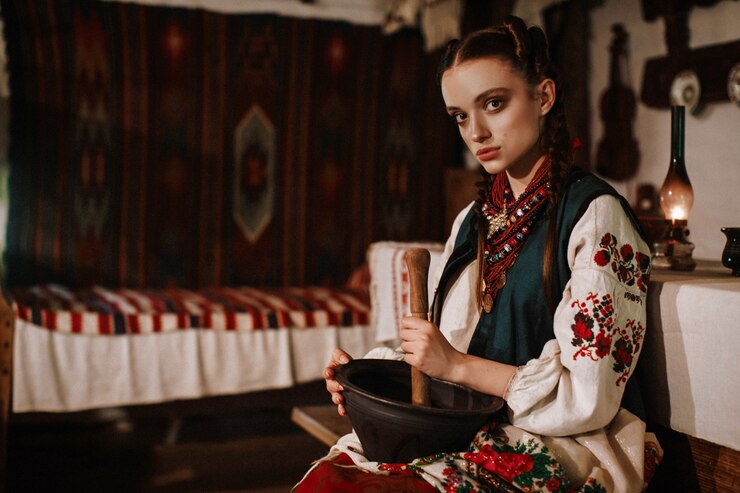The Transcarpathian dialect: how Hutsuls speak
25 November 2022
If you have ever vacationed in Transcarpathia and had the opportunity to communicate with the locals, you have certainly noticed that the language and dialect of the townspeople are significantly different from the usual Ukrainian language. Kulko, no, varosh, vuyko — these and other words in the vocabulary of the residents could cause you to misunderstand what the interlocutor is trying to convey.
The fact is that Transcarpathia originally stands out among other Ukrainian regions with its dialect, which is unlike any other dialect. The Transcarpathian dialect has often been the cause of disputes about whether Westerners should speak literary Ukrainian, but this “language issue” does not even want to be raised because of its absurdity and groundlessness.
In order to dispel myths and confusion around the dialect, today we will understand how the Transcarpathian dialect was formed, what it is now, and what is the role of the Western language.
The Transcarpathian language and its history
The first written mention of the peculiarity of the dialect of the local inhabitants of the Carpathians and mountainous areas dates back to the 15th century. Scientists are of the opinion that the dialect was finally formed a little later, namely in the 16th – 17th centuries.
The reason for the formation of a special linguistic dialect (from Greek — dialect, to speak) is the territory being part of several states for a long time. Thus, the territory of modern Transcarpathia in the past was part of Austria-Hungary, Czechoslovakia and the Soviet Union, and now it is part of Ukraine. Whatever one may say, however, life under different flags, and therefore under different languages, has influenced the dialect of westerners and brought many foreign words and phrases into the lexicon of local residents.
To explain how it works, let’s recall a popular mistake that most Ukrainians make, namely the use of the expression “Ask a question”, which is a copy of the Russian language, firmly entrenched in the Ukrainian dialect. In fact, the lexically correct variant is the expression “Ask questions”. This is how the Transcarpathian dialect was formed, which became a set of words and expressions from Russian, Hungarian, German, Ukrainian, Czech and Slovak languages. The language has the most Hungarian borrowings, because Transcarpathia was part of Austria-Hungary for the longest time.
How do the Hutsuls speak now? The “backbone” of the previously acquired dialect remained, but it is still supplemented with new words and expressions borrowed from the neighboring countries of Hungary, Romania, Slovakia and Poland. Bordering with other countries and close communication with foreign-speaking neighbors still complements and enriches the dialect with new dialects.
The Western dialect, as we could already understand, is the result of the long history of the region and its borders and being under the flags of other countries.
Varieties of Transcarpathian dialect
That’s right, the Western dialect is not homogeneous and differs from region to region. In total, there are 4 dialects:
- Borzhava (spread from the rivers Rika to Latorytsya);
- Uzhansky (between Latorytsya and Uzh);
- Maramorosky (between Rika and Shopurka);
- Verkhovyna (southeastern part of Velyky Berezny and Volovets districts and southwestern part of Mizhhirya district).
Thus, residents of Uzhhorod are unlikely to understand those who live in Irshava district, as well as locals in Tyachiv will not be able to speak fluently with natives of Rakhiv.
The biggest difference is noticeable in villages where residents live far from other settlements, thus learning to speak only pure dialect. Do you remember that video with an elderly woman who actively talks about her life and everyday life against the background of green mountains? Yes, it is a vivid example of the local dialect, but this is the “first” level of complexity, where it is still quite easy for Ukrainians to understand the essence of the conversation and to understand almost all the words.
It is more difficult to understand what shepherd Mykhailo says about Romanian dogs. Here we can hear unknown words “gonno”, “usia”, “koshara” and others. The dialect is complicated by the fast speech and the way of swallowing some sounds, which even adds charm and color to the Transcarpathian language.
Is it a language or a dialect?
Since ancient times, the debate about whether Transcarpathian is a language has not subsided. Some people call it a dialect, while others consider it a full-fledged separate language. In order not to be unfounded, we note that in certain European countries the Transcarpathian dialect is officially recognized as a language: for example, in Serbia the language has the status of the official Ruthenian, and in Slovakia it is considered a national minority language. In Ukraine, the Rusyn language (Rusyns are an ethnic group that speaks Western language) is recognized by the Law as a regional language, but at the same time Rusyns are not recognized as a separate official ethnic group, as Hutsuls, Lemkos and Boikos are not recognized.
As for Transcarpathia itself, they have already tried to publish a separate dictionary of the Rusyn language, but to no avail. Attempts to popularize and “legalize” the language did not end there, and in 2007, 10 thousand copies of various books were printed in the Transcarpathian language. Rusyn is still the main language spoken on local television, recorded songs and recited poems. An example of such a TV channel is “Tisa-1”.
Currently, the Transcarpathian dialect is not an official language, but in the future it may be recognized as such.
Modern western dialect
For five centuries, the words of Western Ukraine in the vocabulary of the locals have been constantly changing, and new phrases and expressions have been added and passed into everyday use by native speakers. Some words are almost extinct, such as the word “farahach”, or from Hungarian fáradtság, which means “fatigue”. Nowadays, only elderly people can hear this kind of slang, and young people hardly use such gungarism anymore.
Dialects, depending on the region, still differ from each other. The most Ukrainianized is considered to be the Hutsul dialect, whose speakers live in the upper reaches of the Tisa River, but it also has many Romanisms from foreign neighbors.
Philologist and linguist Petro Midyanka, Shevchenko Prize winner, who has been working at the Tisza School for more than 40 years, has compiled a phrase that contains borrowings and calques from almost all the languages that influenced the formation of the western dialect. The phrase sounds like this:
I furt make my own friga from fresh brynza, put the corned beef on a large sherpenov, do not put the pork there, and that food is firtal and ready for life.
Brynza here is a famous sheep cheese, and its name comes from the Romanian language. Furt in the phrase means always in Czech, firtal is translated as a quarter in German, sherpenov means a plate in Hungarian, and friga means melted brynza in Romanian.
Now, according to Petro, the dialect is oliterated, and almost nothing is left of the classical colorful dialect. In his opinion, the language underwent the greatest changes during the Soviet Union, when Western words were russified and modified as much as possible.
The current situation is also unacceptable for the dialect, according to Pavlo Chuchka, a local linguist. The scientist believes that modern political circles are trying to continue the Russification of the language, adding and artificially implanting Russian words, which then, for example, form a calque “please” and “horse”. Instead, according to Pavlo, the dialect should be comprehensively studied and preserved, because it is part of the local flavor and history that attracts tourists from all over the world.
If you plan to go to Zakarpattia, you will need to learn at least a few words from the dialect to understand the locals and be able to ask them questions. An example of such words:
- Varish (or Varosh) — a city;
- Kotsur (or Matzur) — a cat;
- Kulko — how much;
- Gazda — the owner;
- Nich — nothing;
- Nykati — to look;
- Hochinka — clock;
- Pak — later;
- Faino — good, good;
- Aino, but — yes;
- Adde -— there;
- Vad — or;
- Palinka — fruit vodka or moonshine.
The names of local dishes in Transcarpathia are also surprising: here you can find bograch, or meat soup with paprika and vegetables, banosh, or corn porridge with cream with cracklings, cheese or mushrooms, as well as lecho, or stew of peppers, onions and tomatoes with the addition of eggs, sour cream and meat.
Teaching a Ukrainian or a foreigner a language is difficult, because first you need to choose a dialect, and only then start studying it. The difficulty lies in the lack of books or manuals of the Transcarpathian dialect, as well as in the constant change of the language due to the addition of new words. To start speaking Western like a nightingale, you will have to move to the previously chosen region and constantly communicate with the locals. For a one-time trip it is enough to learn only a few popular words.
The role of a dialect
But is there any sense in the existence of the Transcarpathian language? Philologists and scientists of our country prove that it does make sense. Linguists, such as Petro Midyanka and Pavlo Chuchka, believe that the role of the dialect for Ukraine is as follows:
Enrichment of the Ukrainian language. Yes, since the times of the Soviet Union our literary language has been Russified, and if it is still quite easy to find the pure language in books, it is almost impossible to talk to the inhabitants of the country in real Ukrainian without calques and borrowings. The western dialect, which is not inferior to the Ukrainian language in melodiousness and phonetics, makes it possible to popularize the Nightingale language and enrich it with new words and phrases, squeezing out the Russian tracing paper.
Promotion of tourism. It is no secret that the Carpathians and the region of Transcarpathia are one of the most tourist places in our country. It is also important that the local flavor attracts foreigners to the region, who are delighted to listen to the locals and their conversation. The importance of tourism for the country is quite clear: it enriches the state budget, gives the development of business and entrepreneurship, becomes an impetus for creating new jobs, etc. Without the Transcarpathian dialect and, in fact, without the lifestyle of the locals, tourism in the region could face serious problems.
Learning other languages by locals. It is much easier for Transcarpathians who speak the dialect to learn Romanian, Hungarian and Slovak, because many words from other languages are already in their vocabulary.
In order not to let the Transcarpathian dialect disappear from the face of the earth and to popularize the language, music groups such as Rock-H, Vandor, Chalamada, Marina and Company, Tristavisim, Hudaki Village Band and others were created. The performers create songs only in the dialect, and they have already performed twice at the largest festivals in Europe. The song “Bitanga” by Alina Pash, who even performed in Davos, became popular.
Conclusions
Today we learned what the Western language is, how it was formed, what it consists of and what its role is for our country. The data showed that the Transcarpathian dialect is an important part of the culture and life of the inhabitants of Transcarpathia, and its role for Ukraine is much greater than we could have thought. Let us cherish and protect our language and customs, we must not allow the Russification and disappearance of such a colorful and vibrant dialect!







